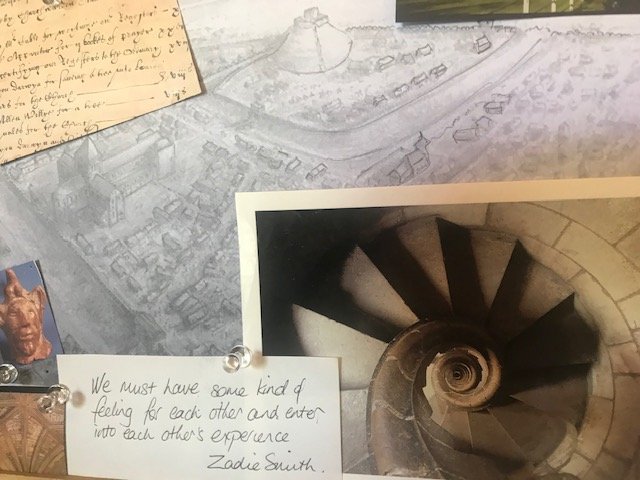The Second Draft
Pause. Perspective. Intention
At the end of last year, I finished the wild-and-wooly first draft of my novel. This time I’ve decide to take the second draft process more thoroughly: instead of diving back into the chaos I’ve created, trying to sort it out by reworking and editing, I’ve taken a pause to look and think again. It has been an incredibly helpful process.
First of all, I took time away from the manuscript, so that I could come back to it with more perspective. I printed it out and read it through, pausing only to jot down a note now and then, aiming only to read as my readers might, so that I could get a general impression of how the story is working in terms of pace, character, structure, and so on. Plus, that one single question that always seems so hard to answer: What is this story about? (I think I know…)
Then I read it again in more detail. I found and noted issues ‘on the ground’: inconsistencies, awkward language, and plot holes, but I didn’t dwell long on these — they will be dealt with in later drafts. The most important aspect of rereading was the ‘bird’s eye view’: the overview of characters, structure and narrative development.
Characters
I looked closely at my characters: are they ‘real’ or have I slipped into using them simply to serve the story, or an idea? Am I pushing them around like chess pieces instead of letting them show me who they are? Through my fresh reading, I recognise that in places I’ve simply assumed they will have certain attitudes and responses because I’ve assumed the story will go in a certain direction.
I took time out to get to know my main characters more fully — their past, their wounds, their hopes and, most importantly, their yearning. I asked: How is their past impacting on their present desires? I allowed them to tell me.
I had done all this before I began writing the first draft, but I wanted to go deeper still. And what an enormous difference that has made.
Then, back at the manuscript again to ask more questions. What is the emotional arc of my main characters? What are their inner and outer conflicts in this story? I’m now reworking the first third of the novel, giving my protagonist room to breathe and move, and that will set off new directions and encounters in the rest of the story.
It’s a little daunting to know that I’m beginning again in some ways, but it’s also exciting to be digging deeper into my characters. And it’s not all new; I do have a story to work with.
Structure
When I’m writing the first draft, I’m so immersed in detail and events that, even though I try to think about the overall structure, I just don’t have the space to look at the big picture. That’s fine with me. I don’t plan, so it makes sense that I won’t have a clear sense of the structure. I can’t look at the map while I’m on the journey because there isn’t one; the road has been slowly making itself as I write. I’ve taken Colum McCann’s advice to allow the structure to emerge. In a second draft, I can now take a bird’s eye view. I can ask myself if I chose the better fork in the road, or whether I should have taken that particular scenic route, or just pressed on over the mountain. It’s a bit like the Irish joke about asking directions: ‘Well, I wouldn’t start from here’.
With a stronger sense of my character, the paths my structure will take began to resolve. The fog began to clear.
Threads
I’ve read advice that the second draft is a time to clarify and develop themes. I noted some main themes, but I’ve been cautious about pushing them too hard, because I want them to continue to evolve in their own detail and particularity.
Nonetheless, I noted the narrative threads and thought about how and where they overlap or intertwine. Now I can see where the narrative has become saggy and episodic because I was exploring, still finding my way into the story. I’m now working on making the action tighter, more integrated.
I haven’t been able to imagine what the ending might be, but now I’m more confident that it will become clearer as I write into it.
Research
I’ve noted areas where I need a little more research (there’s always space for more!), but for now that’s on the back burner. My research books are off my desk, and my research sticky notes no longer loom over me from my cork board; they’re now stuck into one of my research notebooks. My pin board is now closer to a mood board.
It seems a little paradoxical, but by gaining a clearer perspective, a view from above, I’ve been able to sink more deeply and confidently into my story.
I know that none of this is revolutionary, and probably everything I have done would have become apparent eventually, even if I had dived in and not taken my Second Draft approach. But it would have taken longer, been slower and more painful. And who needs any extra pain? The difference is that this process is more intentional.
Perhaps the rest of the world is already doing this, and I’m just catching on. So be it.
Photo by Quang Nguyen Vinh
I know some writing centres offer courses on The Second Draft. Have you done one? Do you have your own technique?


